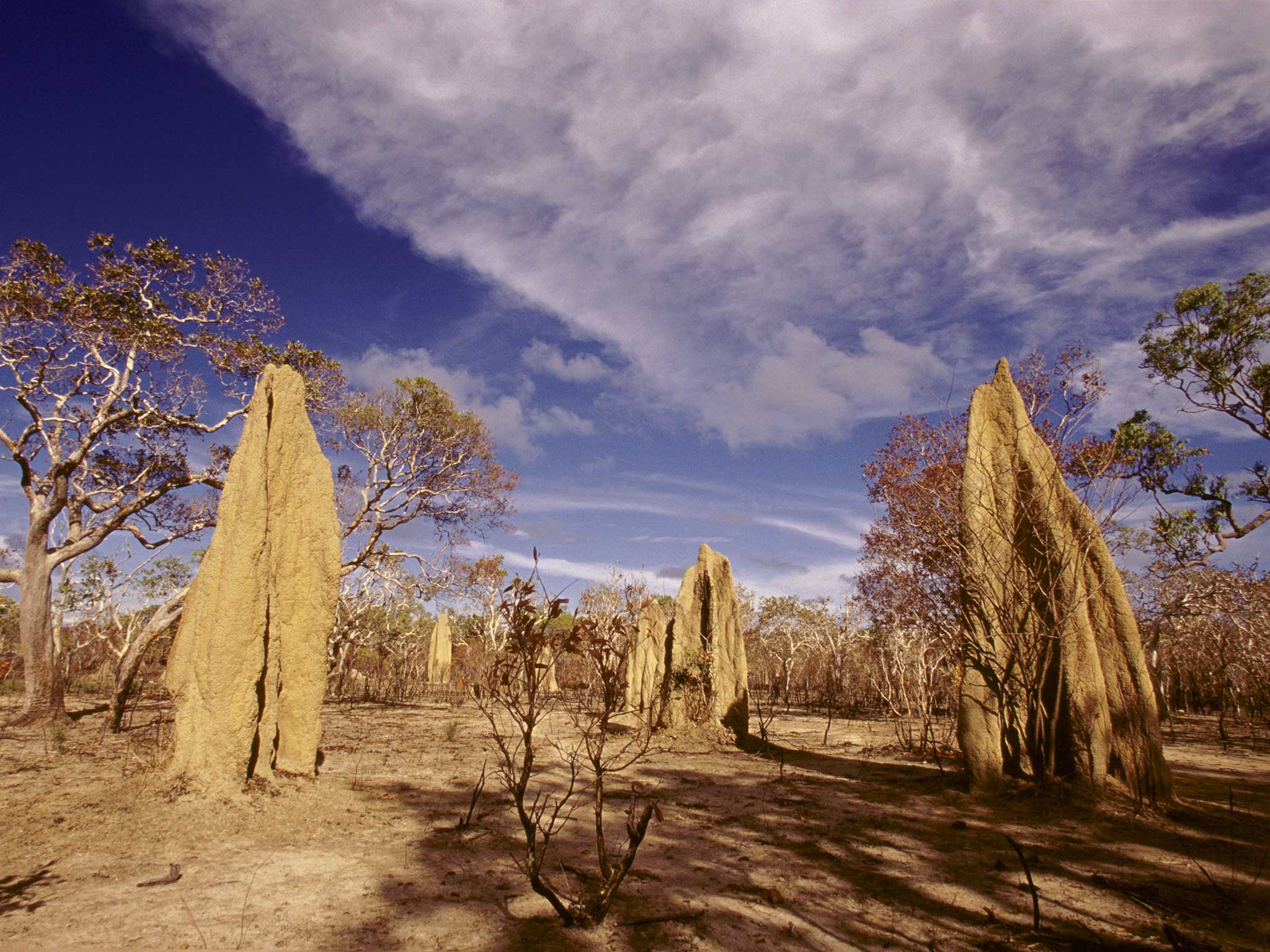Mounds of soil made by termites found to hold back encroachment of the desert, scientists find
The ground surrounding termite mounds stores nutrients and water, allowing plants to flourish while the empty, termite-free land further away dries out

They are considered to be pests with a taste for anything made out of wood, but for ecologists they could become a vital weapon against the steady advance of deserts around the world.
Mounds of soil made by termites when they build their high-rise nests have been found to hold back the encroachment of deserts in dry, savannah grasslands threatened with desertification, scientists have found.
The ground surrounding termite mounds store nutrients and water better than it otherwise would, which allows plants to grow and flourish while the empty, termite-free land further away dries out, the researchers said.
A study discovered that the myriad of tiny underground tunnels created by termites when they build their multi-storey nests allow rainwater to penetrate the soil which helps to slow the spread of deserts in the dry grasslands of Africa, South America and Asia.
“The rain is the same everywhere, but because termites allow water to penetrate the soil better, the plants grow on or near the mounds as if there were more rain,” said Corina Tarnita, assistant professor of ecology and evolutionary biology at Princeton University in New Jersey.
“The vegetation on and around termite mounds persists longer and declines slower. Even when you get to such harsh conditions where vegetation disappears from the mounds, re-vegetation is still easier,” Dr Tarnita said.
“As long as the mounds are there the ecosystem has a better chance to recover,” she said.
Termites are “eusocial” insects meaning that they live in colonies of overlapping generations and have a division of labour based on a caste system, like ants and bees. They live of dead and decaying matter and are critical for the re-cycling of soil nutrients, but they can cause havoc in timber homes.
The study, published in the journal Science, used a mathematical model to simulate the changes that take place during desertification and matched the theoretical results with real observations in termite-inhabited regions on the edge of deserts.
Robert Pringle of Princeton said the unexpected effect that termites had on protecting against desertification suggest that other tunnel-building animals, such as ants, prairie dogs and gophers, may have a similar role.
“I like to think of termites as the linchpins of the ecosystem in more than one way. They increase the productivity of the system, but they also make it more stable, more resilient,” Professor Pringle said.
Join our commenting forum
Join thought-provoking conversations, follow other Independent readers and see their replies
Comments